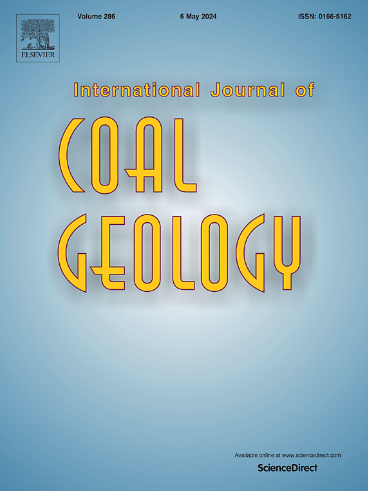利用一维/二维核磁共振和离心技术对中国近海地区湖相页岩的石油成因和流动性进行实验研究
IF 5.6
2区 工程技术
Q2 ENERGY & FUELS
引用次数: 0
摘要
页岩油的发生机理和流动性对从页岩系统中提取碳氢化合物有重大影响。然而,岩石物理和石油地球化学性质对石油流动性的影响尚不清楚。本研究使用薄片、扫描电子显微镜、核磁共振(NMR)和有机地球化学分析对不同岩性的页岩进行了研究。利用一维和二维核磁共振技术对原始状态、提取状态、石油饱和状态和离心状态的页岩进行了系统扫描。通过比较不同状态下样本的 T2 光谱,获得了多尺度孔隙。建立了含碳氢化合物成分的二维核磁共振识别光谱。结果表明,硅质页岩的总油含量和可移动油含量最高,而由于孔隙空间有限且连通性较差,霰质页岩的总油含量和可移动油含量最低。可移动油主要储存在颗粒间孔隙、溶解相关孔隙和层理裂缝中。其含量随着长石矿物的增加而增加。硅质页岩中的油富含低碳链碳氢化合物,具有很高的流动性。根据石油在多尺度孔隙中的分布,提出了石油流动分布的策略:超微孔区为不流动油区;微孔区为难流动油区;过渡孔区为易流动油区;大孔区为完全流动油区。流动油主要容纳在过渡孔隙和大孔隙中(孔径为 20 nm,流动油饱和度超过 60%)。本文章由计算机程序翻译,如有差异,请以英文原文为准。
Experimental investigation on the oil occurrence and mobility of lacustrine shales in offshore area of China using 1D/2D nuclear magnetic resonance and centrifugal techniques
Shale oil occurrence mechanism and mobility have significant influences on hydrocarbons extraction from shale systems. However, the effects of petrophysical and petroleum geochemical properties on oil mobility are not understood. In this study, shales with different lithofacies were investigated using thin sections, scanning electron microscopy, nuclear magnetic resonance (NMR), and organic geochemical analysis. Shales at original, extracted, oil-saturated, and centrifugal states were systematically scanned using 1D and 2D NMR technologies. The multi-scaled pores were obtained by comparing the T2 spectra of samples at different states. The 2D NMR identification spectra for hydrocarbon-bearing components were established. The free oil, adsorbed oil, mobile oil contents were quantitatively evaluated and the geological controls on oil mobility were discussed.
Results show that the siliceous shales have the highest total oil and movable oil contents, while the argillaceous shales have the lowest values due to the limited pore space and poor connectivity. Mobile oil mainly stores in interparticle pores, dissolution-related pores and bedding fractures. Its content increases with the increasing felsic minerals. Oil in siliceous shales are rich in low carbon-chain hydrocarbons and has high mobility. Based on oil distribution in multi-scaled pores, a strategy about the mobile oil distribution were proposed: Ultramicropores region is the immobile oil zone; Micropores region is the oil difficult-to-flow zone; Transition pores region is the oil easy-to-flow zone; Macropores region is the completely mobile oil zone. The mobile oil mainly accommodates in transition pores and macropores (pore size >20 nm and mobile oil saturation exceeds 60 %).
求助全文
通过发布文献求助,成功后即可免费获取论文全文。
去求助
来源期刊

International Journal of Coal Geology
工程技术-地球科学综合
CiteScore
11.00
自引率
14.30%
发文量
145
审稿时长
38 days
期刊介绍:
The International Journal of Coal Geology deals with fundamental and applied aspects of the geology and petrology of coal, oil/gas source rocks and shale gas resources. The journal aims to advance the exploration, exploitation and utilization of these resources, and to stimulate environmental awareness as well as advancement of engineering for effective resource management.
 求助内容:
求助内容: 应助结果提醒方式:
应助结果提醒方式:


